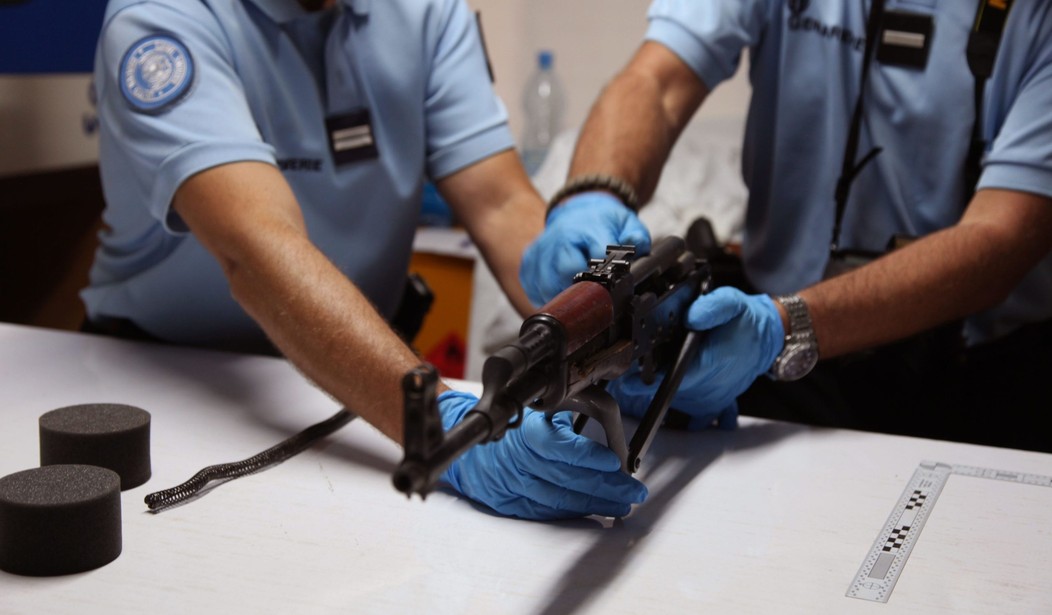A report issued this month tracking the flow of weapons across Libya and the Sahel revealed that terror groups operating in West Africa are getting much more than just inspiration from terror hubs in Iraq and Syria.
The study by UK-based Conflict Armament Research, an independent organization that tracks the flow of conventional weapons and materiel, found that weapons stockpiles remaining from the nearly 42-year dictatorship of Moammar Gadhafi have migrated as far as Mali and Syria.
But investigators found that the unstable country awash in more than 100 militia groups with around 125,000 fighters — some support the unity government, some don’t — is not the only source of illicit weapons in the region.
“The profile of illicit weapons in the region reflects the consequences of other state crises, particularly in Mali, and of weak control over national stockpiles in the Central African Republic and Côte d’Ivoire,” states the report. “The prevalence of Ivorian-origin small arms across the region is a particularly unexpected finding of this investigation.”
And even through the flow of weapons out of Libya has been decreasing, importation of arms and ammunition into Libya has been increasing — particularly from Sudan.
The report highlighted “a new set of weapons” now in use among Islamist armed groups in the southern Sahel, noted when al-Qaeda in the Islamic Maghreb and Al-Mourabitoun attacked hotels, restaurants and resorts this year and last, killing Americans among other foreigners and locals, in Mali, Burkina Faso, and Ivory Coast with “a common set of small arms unlike any previously documented in the sub-region.”
“These include Iraqi-origin assault rifles and a batch of Chinese rifles manufactured in 2011 whose serial numbers interleave with matching rifles that Syrian Kurdish People’s Protection Units (YPG) seized from IS fighters in Syria in 2015. These findings indicate that the Islamist groups responsible for the Sahelian attacks have a common source of supply or constitute a single cell, and point tentatively to possible links or commonalities of supply sources between Islamist fighters in West Africa and those operating in Iraq and Syria.”
The report says the weapons used in the high-profile attacks —AK-pattern Type 56-1 assault rifles— “are a type which are readily available from local sources in the region but which seem instead to have been sourced transnationally.” The Chinese government had not yet responded to trace requests by UN and CAR investigators.
“Significantly, however, CAR has documented two Chinese Type 56-1 rifles from the same ‘560’ serial number series in January 2015 in Kobane (Syria), following capture by the YPG from IS forces. These corresponding serial numbers suggest that China may have originally transferred all the Type 56-1 rifles used in these attacks to the same legal end user and that Islamist fighters responsible for the West African attacks may share a common source of supply with IS forces in Syria,” the report continued.
The weapons may be traveling with their jihadists, as well.
“Another possible scenario may be that corresponding rifles in West Africa and Syria reflect the movement of individual fighters travelling with their own weapons. This view would support the theory that a single cell was responsible for recent attacks in Sévaré, Bamako, Ouagadougou, and Grand-Bassam. This cell may have either procurement or personnel connections to combatants in Syria, even though its attacks were claimed by groups ostensibly allied with al-Qaeda rather than IS forces.”
The report recommended further investigation of the findings “as possible indicators of changing acquisition networks for Islamist armed groups operating in —and possibly between—the Sahel and the Middle East.”
They traced SIM cards for Nokia phones — Islamists’ phone of choice for rocket timers — connected to Mali attacks to distributors in Nigeria and Senegal, but there is still some mystery about the chain of custody. Vehicles used by terrorists in Mali also came from outside the country, with importers traced back to Algeria, Saudi Arabia and Oman dealers.
The CAR investigation found six countries in Africa and the Middle East that had weapons from the Gadhafi stockpile, including North Korean-manufactured 40 mm F7-type rockets in the Central African Republic and Lebanon and a number of 1970s Polish assault rifles in the Central African Republic, Ivory Coast, Libya, and Mali.
However, Gadhafi-era arms have been in shorter supply since 2012. Sudan is pumping newer arms, manufactured within the past five years, into southern Libya and Mali, along with Russian and Chinese weapons.
Investigators traced trafficking routes for the different weapons, including a pipeline of landmines from the Libya-Chad border region — where mines were extensively used by the Libyan army in the 1990s — through northern Niger for use by armed groups in northern Mali.
Significant seizures of shipments containing arms, ammunition, cash and drugs have occurred over the past two years in the Salvador Pass along the Algeria-Niger border.









Join the conversation as a VIP Member